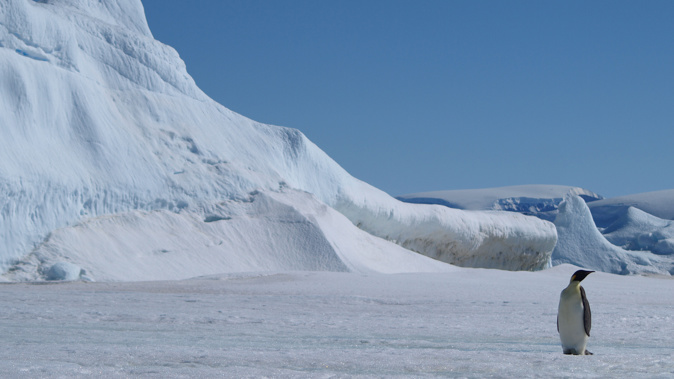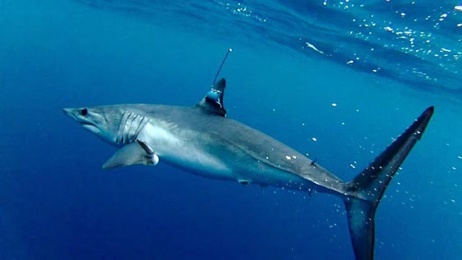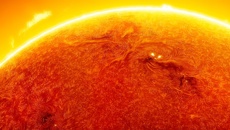
When you think of the penguin, the image that pops to mind is usually the fuzzy bird waddling through snow or swimming in frigid Antarctic waters.
But penguins didn't originate in Antarctica, as scientists have believed for years -- they first evolved in Australia and New Zealand, according to a new study by researchers at the University of California, Berkeley.
The study, which was conducted in collaboration with museums and universities around the world, analyzed blood and tissue samples from 18 different species of penguins. They used this genomic information to look back in time, and trace the penguins' movement and diversification over millennia.
"Our results indicate that the penguin crown-group originated during the Miocene (geological period) in New Zealand and Australia, not in Antarctica as previously thought," said the study, published on Monday in the Proceedings of the National Academy of Sciences. "Penguins first occupied temperate environments and then radiated to cold Antarctic waters."
Penguins originated in Australia and New Zealand 22 million years ago, researchers suggest; then, ancestors of the king and emperor penguins split off and moved to Antarctic waters, likely attracted by the abundant food supply there.
These findings also support the theory that king and emperor penguins are the "sister group" to all other penguin lineages -- adding another piece to the long-debated puzzle on where exactly these two species sit on the family tree.
Then about 12 million years ago, the Drake Passage -- the body of water between Antarctica and the southern tip of South America -- fully opened up. This allowed the penguins to swim throughout the Southern Ocean, and spread more widely to sub-Antarctic Islands as well as the warmer coastal regions of South America and Africa.
Today, the flightless birds are still found in Australia and New Zealand -- as well as Antarctica, South America, the South Atlantic, southern Africa, the sub-Antarctic, Indian Ocean islands, and subtropical regions.
During the study, researchers also discovered a new lineage of penguin that has yet to be given a scientific description.
Penguins are adaptable -- but not enough for climate change
The study shed light on the penguins' adaptability to changing climates -- and on the danger they now face in the modern climate crisis.
"We are able to show how penguins have been able to diversify to occupy the incredibly different thermal environments they live in today, going from 9 degrees Celsius (48 Fahrenheit) in the waters around Australia and New Zealand, down to negative temperatures in Antarctica and up to 26 degrees (79 Fahrenheit) in the Galapagos Islands," said Rauri Bowie, one of the lead researchers and a professor of integrative biology at UC Berkeley, in a statement from the university.
"But we want to make the point that it has taken millions of years for penguins to be able to occupy such diverse habitats, and at the rate that oceans are warming, penguins are not going to be able to adapt fast enough to keep up with changing climate."
The team was able to pinpoint genetic adaptations that allowed penguins to thrive in challenging environments; for example, their genes evolved to better regulate body temperature, which allowed them to live in both subzero Antarctic temperatures and warmer tropical climes.
But these steps of evolution took millions of years -- time that the penguins don't have now, as their populations dwindle.
"Right now, changes in the climate and environment are going too fast for some species to respond to the climate change," said Juliana Vianna, associate professor at the Pontifical Catholic University of Chile, in the UC Berkeley statement.
The different elements of climate change culminate in a perfect storm. Disappearing sea ice mean fewer breeding and resting grounds for emperor penguins. The reduced ice and warming oceans also mean less krill, the main component of the penguins' diet.
The world's second-largest emperor penguin colony has almost disappeared; thousands of emperor penguin chicks in Antarctica drowned when sea ice was destroyed by storms in 2016. Reoccuring storms in 2017 and 2018 led to the death of almost all the chicks at the site each season.
Some penguin colonies in the Antarctic have declined by more than 75% over the past 50 years, largely as a result of climate change.
In the Galapagos, penguin populations are declining as warm El Nino events -- a weather phenomenon that sees warming of the eastern Pacific Ocean -- happen more frequently and with greater severity. In Africa, warming waters off the southern coast have also caused penguin populations to drop drastically.
text by Jessie Yeung, CNN
Take your Radio, Podcasts and Music with you









